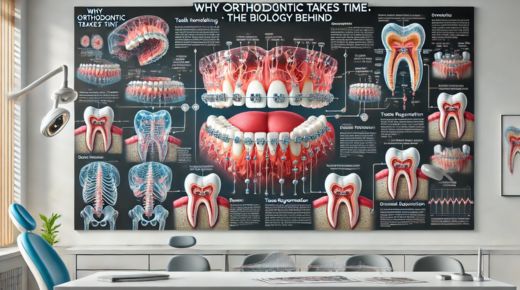Orthodontic treatment is a journey, not a sprint. It’s easy to wonder why straightening teeth takes time. The answer lies deep in our biology. The process involves shifting teeth slowly to prevent damage. Bones, gums, and other tissues need time to adapt. This steady pace ensures lasting results. When using tools like richmond orthodontic appliances, patience truly pays off. Understanding the biology behind orthodontics helps us appreciate the process. Let’s dive into the reasons why orthodontic treatment takes time.
The Role of Bone Remodeling
The movement of teeth relies on the natural process called bone remodeling. This process involves the resorption of bone on one side of a tooth and the formation of new bone on the other. As teeth move, bone cells called osteoclasts break down the bone to make space. Meanwhile, osteoblasts build up new bone to fill in the gaps. This process needs time to ensure that teeth settle in their new positions without causing harm.
According to the National Center for Biotechnology Information, bone remodeling is a complex process influenced by various factors, including age, diet, and overall health. Each person’s biology is unique, which means treatment times can vary widely.
Gum and Tissue Considerations
Gums and connective tissues play a critical role in orthodontic treatment. These soft tissues surround and support the teeth. They also need time to adjust as teeth move. Quick movements can lead to gum recession or damage, which can be painful and potentially lead to other oral health issues.
The American Dental Association emphasizes the importance of gradual movement to maintain healthy gums and tissues. This slow approach reduces the risk of inflammation and ensures a stable result once the treatment is complete.
Factors Affecting Treatment Duration
Many factors influence how long orthodontic treatment takes. Here are three key factors:
- Age: Younger patients often have faster treatment times because their jawbones are still growing.
- Complexity: More complicated cases, such as severe crowding or bite issues, require longer treatment.
- Type of Appliance: Different appliances, such as traditional braces or aligners, have varying treatment timelines.
Comparison of Treatment Times
| Type of Treatment | Average Duration (Months) |
| Traditional Metal Braces | 18-24 |
| Ceramic Braces | 18-36 |
| Clear Aligners | 12-18 |
The Importance of Patience
Patience is crucial in orthodontic treatment. While it may be tempting to rush the process, doing so can lead to complications. Taking the time to allow bones, gums, and teeth to adjust ensures a healthier and more rewarding outcome. According to the Centers for Disease Control and Prevention, maintaining proper oral health during treatment can also help in achieving the best results.
Conclusion
Orthodontic treatment offers more than just a beautiful smile. It enhances oral health and boosts confidence. Understanding why it takes time helps set realistic expectations. From bone remodeling to gum health, every step is essential for success. By appreciating the biological processes involved, the treatment becomes less of a waiting game and more of a worthwhile investment in one’s health.



